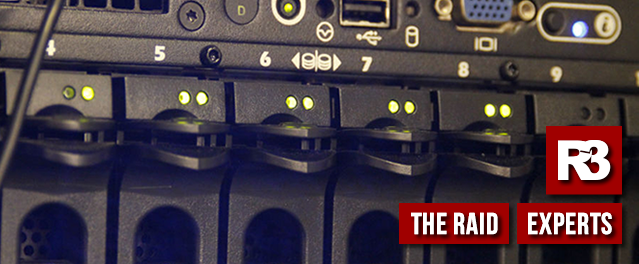
Gas Drop and Air Shock Effects on Hard Drives
How a server datacenter can fail catastrophically from a sudden Gas Attack especially – if the sound barrier is broken!
R3 Data Recovery Ltd has one of the main RAID data recovery labs in the UK. It is called on by those in charge of Servers (Physical and Virtual) held in server racks, SAN, DAS and NAS in onsite server rooms and regional datacenters.
The R3 team of RAID and data recovery engineers have the capacity to image and recover hundreds of drives per week during those rare disaster situations, The R3 team is called on for the more complex RAID recoveries seen in the UK.
One of the more unusual situations R3 are called on to help with is after a datacenter has been affected by a fire but no servers or drives have actually been in flames or had any overheating issues.
Gas Drop / Air Shock due to Fire Suppressant Inert Gas Fire Suppression System Activation
When a fire is detected most offices have sprinklers which cut in and there is water damage. Most datacenters today use IGFSS, inert gases are used to flood the room and suppress the temperature rise and spread of fire. During gas discharges often called a Gas Drop it is not unusual for the many servers in server farm to fail without any obvious damage.
Air shockwave caused by Gas Drop
Although the gases used are inert and naturally occurring the system used to deploy them can effectively create a sonic blast which is at a frequency which vibrates drives and causes them to be affected by slight head crashes, degraded media and bad sectors, but at such a rate the drives cannot handle the errors with a resultant damage to the RAID, VM or data stores.
A common misconception is that air pressure is the issue, this is not the case and the pressure equalization hole is most drives compensates for this, Helium filled and sealed drives also can still be affected by vibration and physical knocks but not the air pressure change.
Damage is not due to temperature change. IGFSSs release about one-third of the data center’s volume in gas when deployed. The gas is stored at high pressure, so when it is released it quickly expands and becomes normal atmospheric pressure, the temperature does drop as the cooler gas absorbs ambient heat.
If you enter the data center after the release, you will notice it is slightly cooler, but this is not a problem causing the hard drives to fail and servers to crash.
The Gas drop system deploys through nozzles effectively whistle at a frequency that is picked up by the hard drives components. There are “tuned” nozzles which change the reverberation frequency and thus can prevent such situations.
If you experience a datacenter failure get in touch with Andy and the team at R3 Data Recovery Ltd. Better still arrange to visit the Security House lab and build R3 Data Recovery into your disaster recovery plans.

